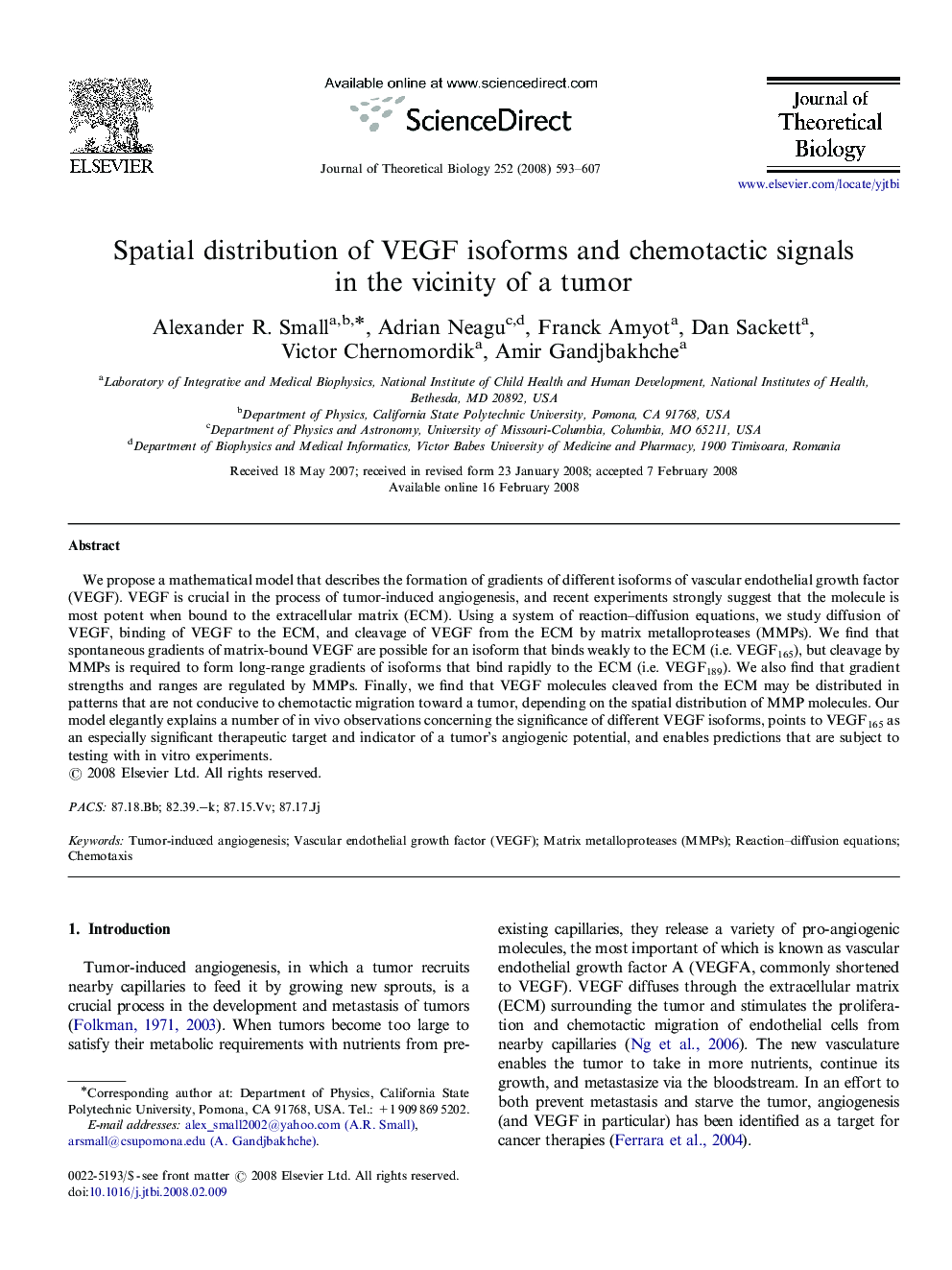| Article ID | Journal | Published Year | Pages | File Type |
|---|---|---|---|---|
| 4498521 | Journal of Theoretical Biology | 2008 | 15 Pages |
Abstract
We propose a mathematical model that describes the formation of gradients of different isoforms of vascular endothelial growth factor (VEGF). VEGF is crucial in the process of tumor-induced angiogenesis, and recent experiments strongly suggest that the molecule is most potent when bound to the extracellular matrix (ECM). Using a system of reaction-diffusion equations, we study diffusion of VEGF, binding of VEGF to the ECM, and cleavage of VEGF from the ECM by matrix metalloproteases (MMPs). We find that spontaneous gradients of matrix-bound VEGF are possible for an isoform that binds weakly to the ECM (i.e. VEGF165), but cleavage by MMPs is required to form long-range gradients of isoforms that bind rapidly to the ECM (i.e. VEGF189). We also find that gradient strengths and ranges are regulated by MMPs. Finally, we find that VEGF molecules cleaved from the ECM may be distributed in patterns that are not conducive to chemotactic migration toward a tumor, depending on the spatial distribution of MMP molecules. Our model elegantly explains a number of in vivo observations concerning the significance of different VEGF isoforms, points to VEGF165 as an especially significant therapeutic target and indicator of a tumor's angiogenic potential, and enables predictions that are subject to testing with in vitro experiments.
Keywords
Related Topics
Life Sciences
Agricultural and Biological Sciences
Agricultural and Biological Sciences (General)
Authors
Alexander R. Small, Adrian Neagu, Franck Amyot, Dan Sackett, Victor Chernomordik, Amir Gandjbakhche,
